The first time Murray Tinkelman met Lorraine Fox (someone whose work he had much admired) he was just beginning his tenure at New York's vaunted Charles E. Cooper studio. By that time (around 1956) Lorraine Fox was already well established in the illustration business and at Cooper's. "Lorraine was a very quiet, very reserved lady," says Murray, "and underline "lady." She was a lady. Very elegant; a very handsome woman."
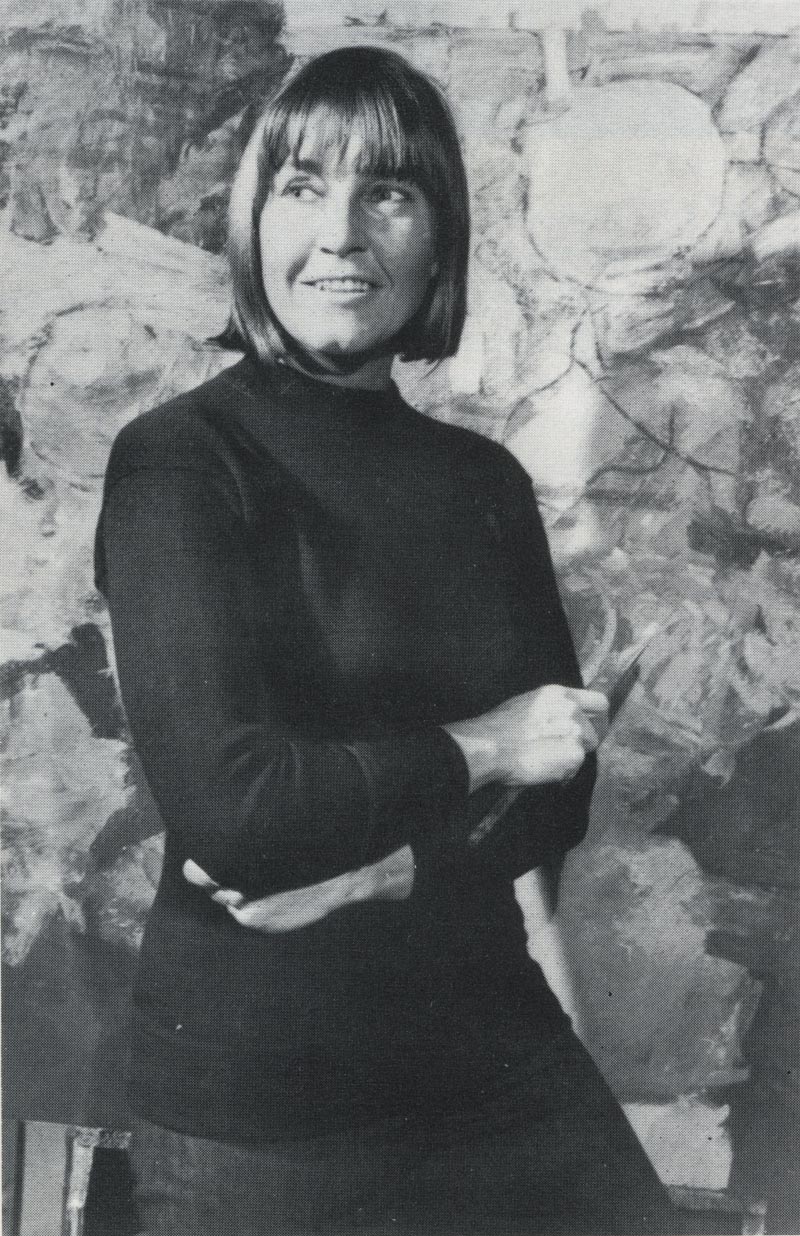
"Lorraine lived in... that world of decorative illustration. It wasn't quite cartooning, it wasn't quite narrative illustration, it was a kind of symbolic illustration that depended on folk art as a root source."
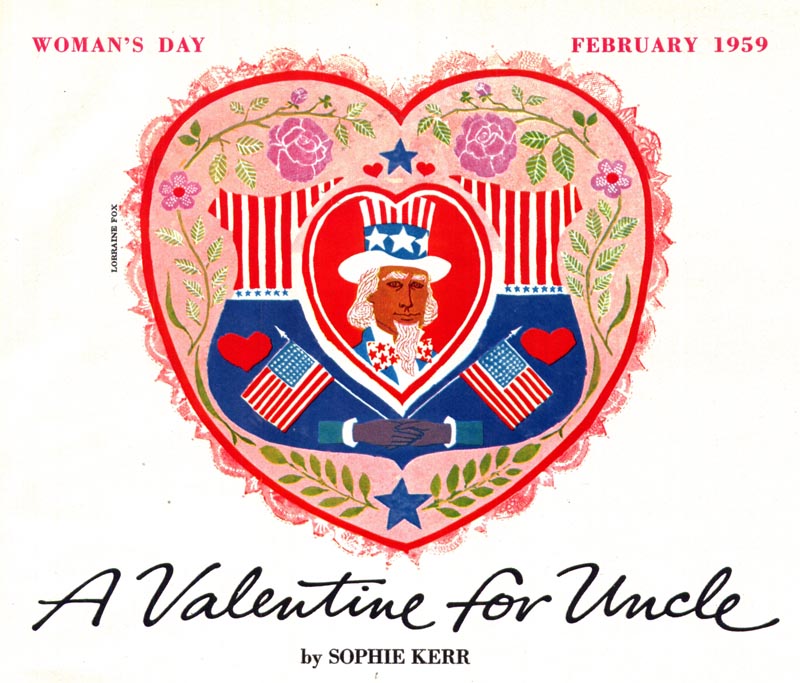
Murray continues, "[In spite of having no formal illustration education] I knew enough that what Lorraine was doing was brilliant. Anybody could tell what Al Parker did and what Norman Rockwell did was brilliant, but Lorraine was doing brilliant stuff that didn't depend on the academic foundation of Parker or Rockwell."
On meeting her for the first time, he says, "I was disappointed at her lack of response to what I was doing. She didn't say, "Aww, that's crap," or anything demeaning, but she just looked a little... 'cool' about it."
That cool initial impression didn't last long. Some ten years later, in an interview with Famous Artist Magazine, Fox, while discussing a critical turning point in her artistic growth described meeting "a young painter who told [me] about his painting experience with Reuben Tam at the Brooklyn Museum of Art."
The young painter was, of course, Murray Tinkelman. The two would not only become respected colleagues, but life-long friends. Thanks to Murray's encouragement, Fox went on to study with Reuben Tam and later said, "It changed [my] thinking. I would run into people who would say, "I see you've been Tamified."
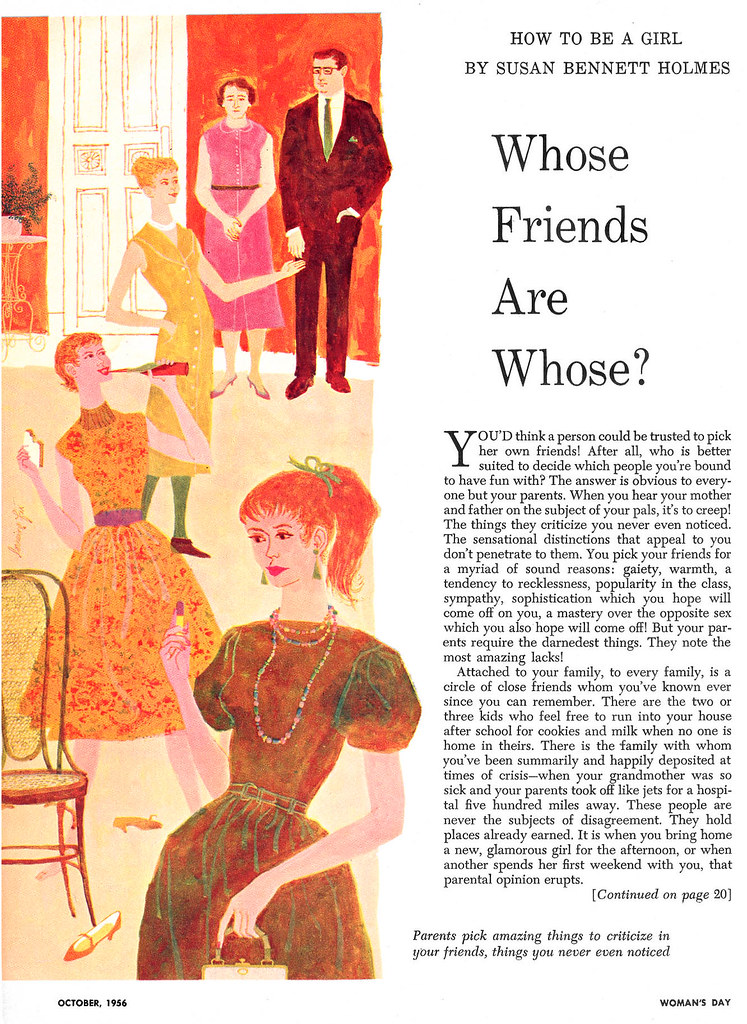
Lorraine Fox is a mid-20th century illustrator of great distinction - because she was so successful as a female illustrator in what was then a male dominated industry, because she never wavered from pursuing her own unique artistic vision at a time when the business very nearly insisted on a sort of standardized 'literal realism,' and because, perhaps most remarkably, she accomplished this not from the fringes of the business, but ensconced in what was then truly the centre of the 1950s commercial art universe - the Charles E. Cooper studio.
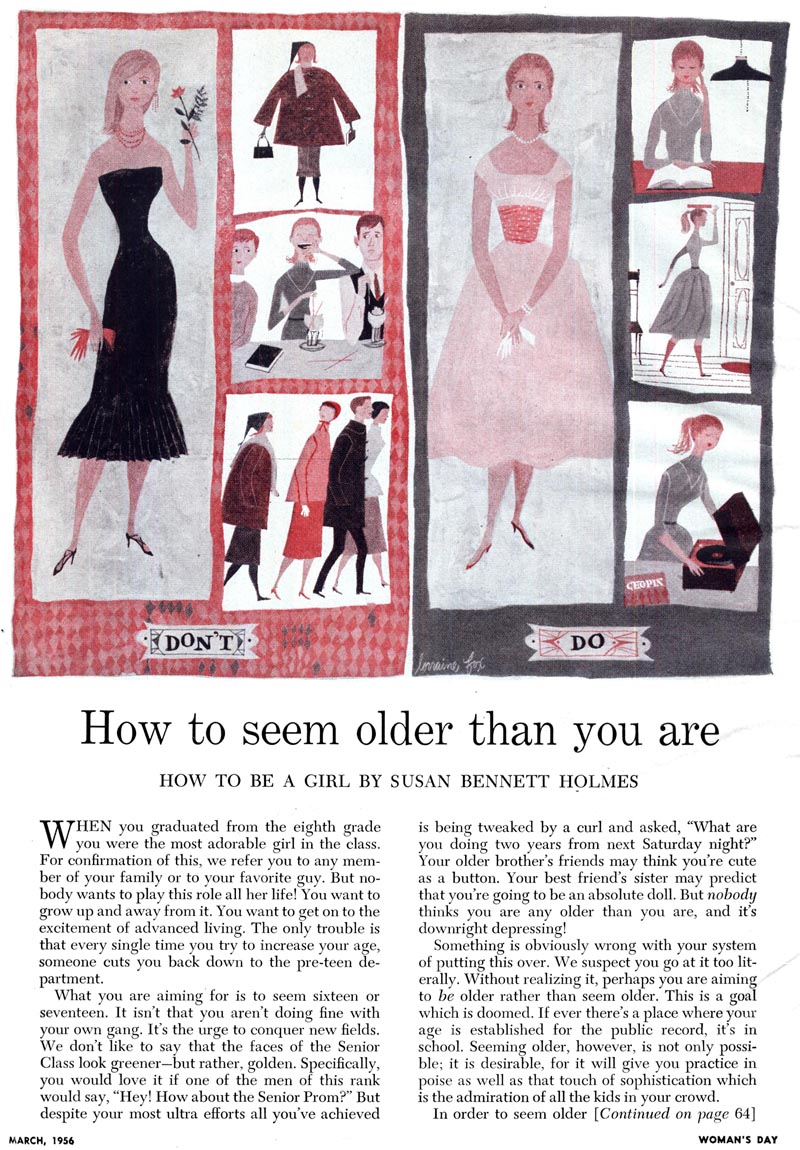
Cooper's was the place where commercial art was purchased by America's largest advertisers for top dollar. It's salesmen were not exactly attuned to - or receptive of - highly individualized, style-driven illustration. In spite of the odds, Lorraine Fox held her own and flourished there on both advertising and editorial assignments, her work appearing steadily in the major magazines of the day.
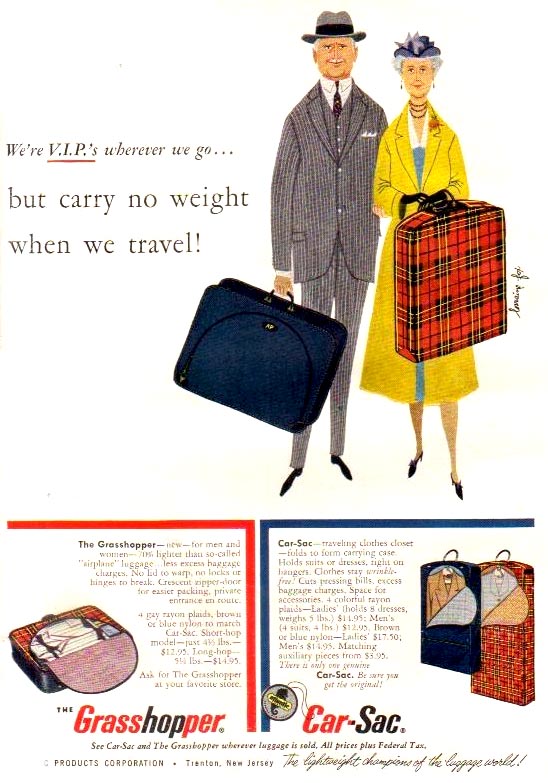
Thanks to Matt Dicke, who provided me with scans, I now have a copy of the entire 1967 interview with Lorraine Fox.
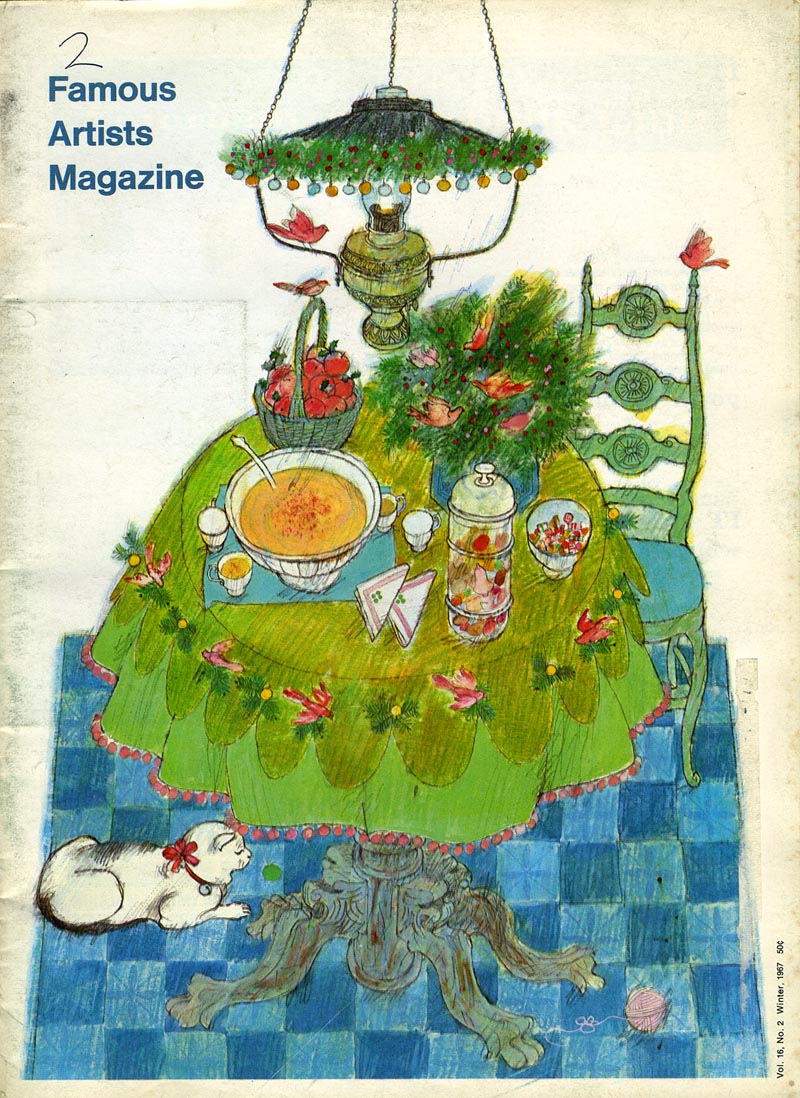
Let's read what she had to say about her career, about art, life and learning - in her own words.
Close-Up of the Artist: Lorraine Fox by Mary Ann Guitar
Famous Artists magazine: How long have you and your husband lived out here?
Lorraine Fox: About 17 years. We met at Pratt, where we were art students together. He was the best in the class. After graduation he was in the service for several years. When he got out, we had saved enough money to buy a house. We got married and moved here in 1950.
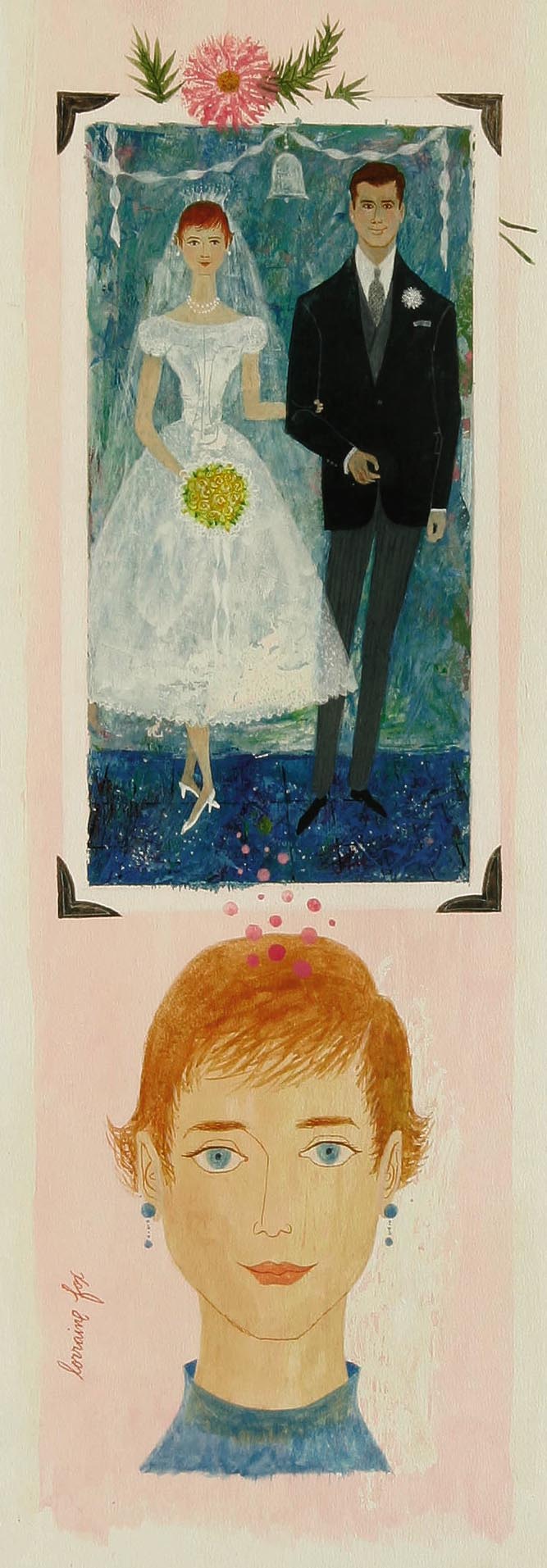
FA: Did you grow up on Long Island? Is that why you chose this part of the world?
Fox: I was born in Brooklyn but we moved to Glendale, Long Island, when I was six, so I did grow up here. My mother lives about 20 minutes away, which is very convenient. She loves to cook and she's always bringing me a quart of soup or something else she's made.

FA: Did someone in your family encourage you to study art?
Fox: My brother, the cartoonist Gill Fox, was six years older than I and I used to see him draw.
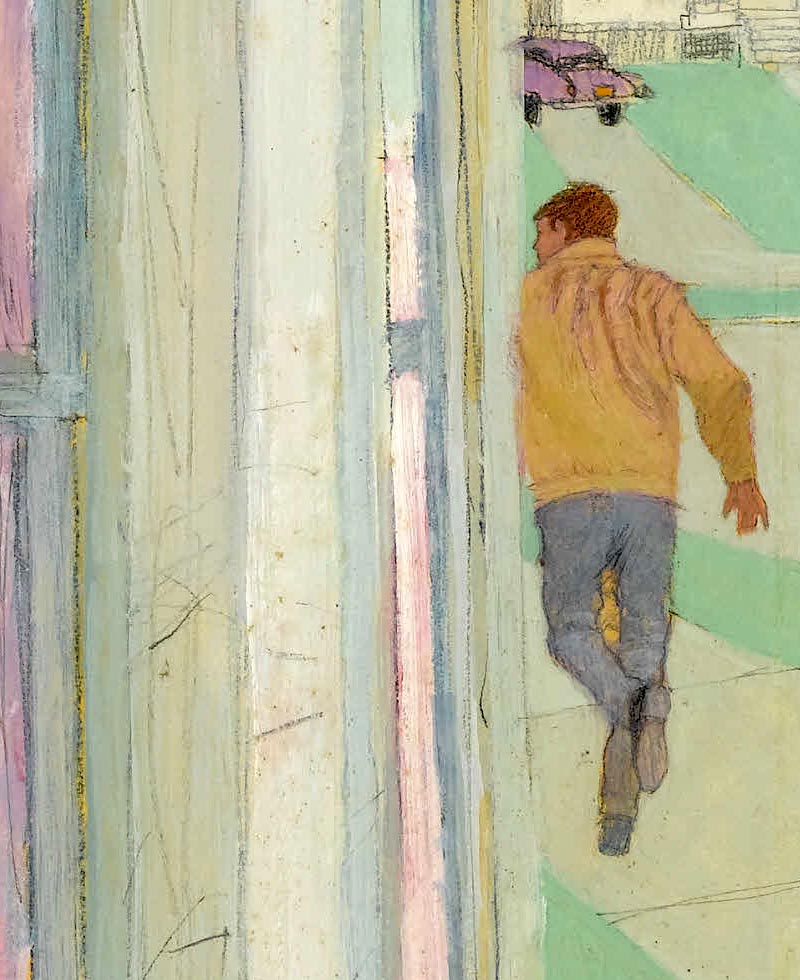
I was kind of a tomboy and I worshipped my brother.
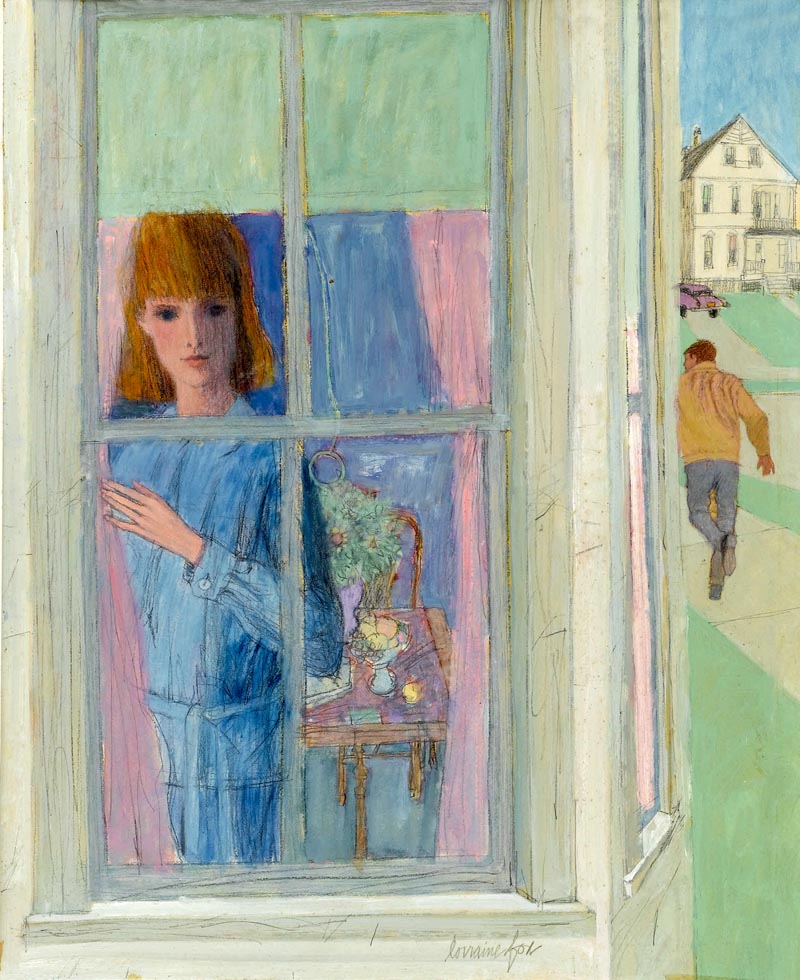
I guess I wanted to be like him, in both athletics and drawing. Some psychiatrist could figure that out!

FA: Were you an instant success as soon as you began drawing in school?
Fox: In grammar school I won art awards. I got medals for posters I made for a Humane Society competition. I've always been fond of animals. In high school I suppose I was pretty much known as an artist. Instead of a business course I took a general course, because you could have more art by taking that. I think I had a good start in high school and I had a teacher who became interested in me.
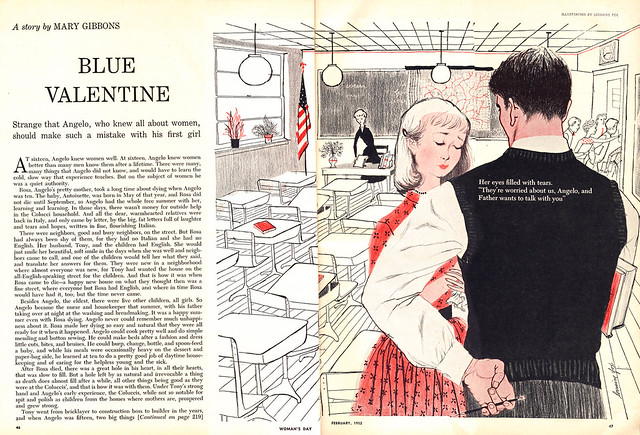
She asked to talk to my parents and told them that she thought I should have more training. She was the one who recommended Pratt. It was probably one of the best conversations my parents ever had. Pratt really opened my eyes.

FA: In what way?
Fox: I had a teacher named Will Burton who was leading the students toward a cerebral approach to commercial art, which is related to painting. I got a very commercial background at Pratt, but Burton's influence was most important, although I didn't fully realize it at the time. At Pratt, you were exposed to illustration, advertising design, and industrial design your first year. I took advertising design, mainly through the influence of my father. He thought this would enable me to get a job in an advertising agency doing layouts. It was more of a sure thing than doing illustration.
FA: And was it easy to break into an agency when you graduated?
Fox: Yes. I got my first job in an agency. The man I worked for would say, for example, "We have a medical thing we want to sell here," and he'd give me the headline and I was supposed to come up with a dozen fast sketches,

... but I was not really an idea lady. Instead, I would get an idea I liked and finish completely and carefully.
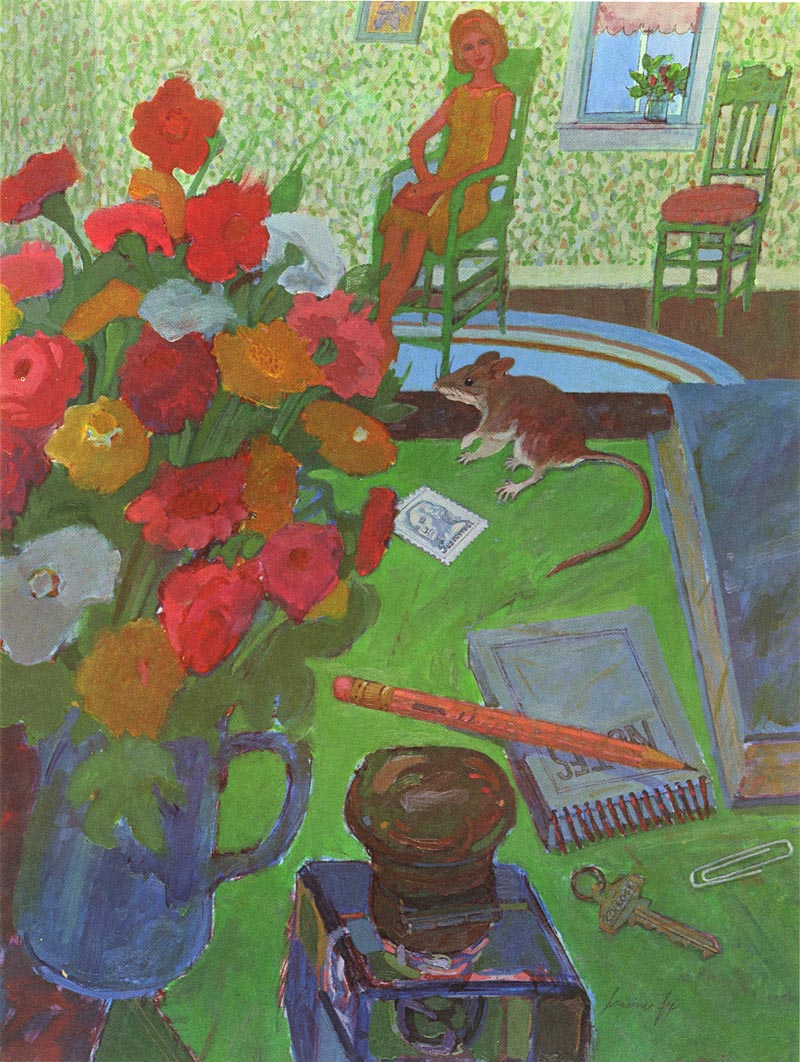
He finally said that I should get an agent and free-lance.
FA: Do you think he was trying to get rid of you?
Fox: Maybe. No, I don't really think so. He liked what I did and he took an interest in me. I didn't have any trouble getting an agent. Somebody saw that I had potential. If I were trying to break in today, though, I never would have made it. The competition now is so terrific. Then the agent went into the Army and his sister took over. I sold myself, too, through my portfolio. I made samples. I've been making samples for 20 years, only now they're paintings.
(Below, the earliest Lorraine Fox art example I've found; from 1945)
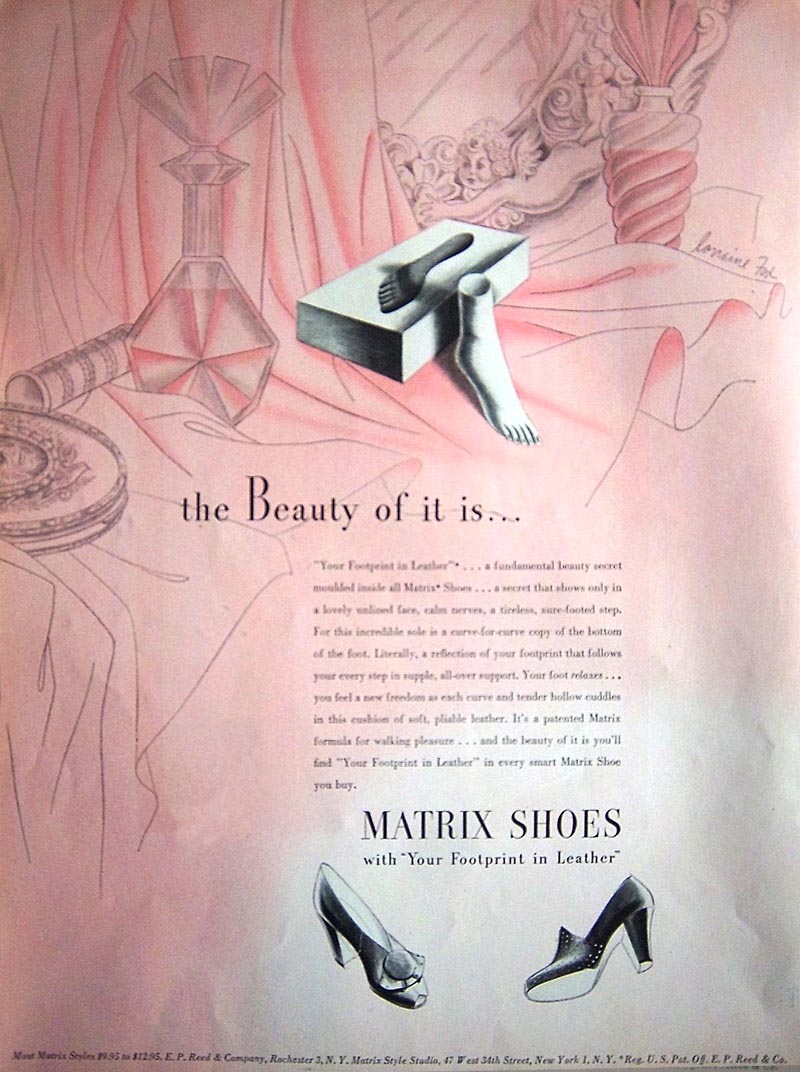
FA: Did you develop a recognizable style, something an agent could sell, as soon as you began free-lancing?
Fox: I suppose you could call the kind of thing I did "decorative design." It leaned toward the primitive and people liked it.

I did quite a lot of magazine covers and spot drawings then and I was good at painting food.

All the time I was doing these things, though, I was constantly annoyed.
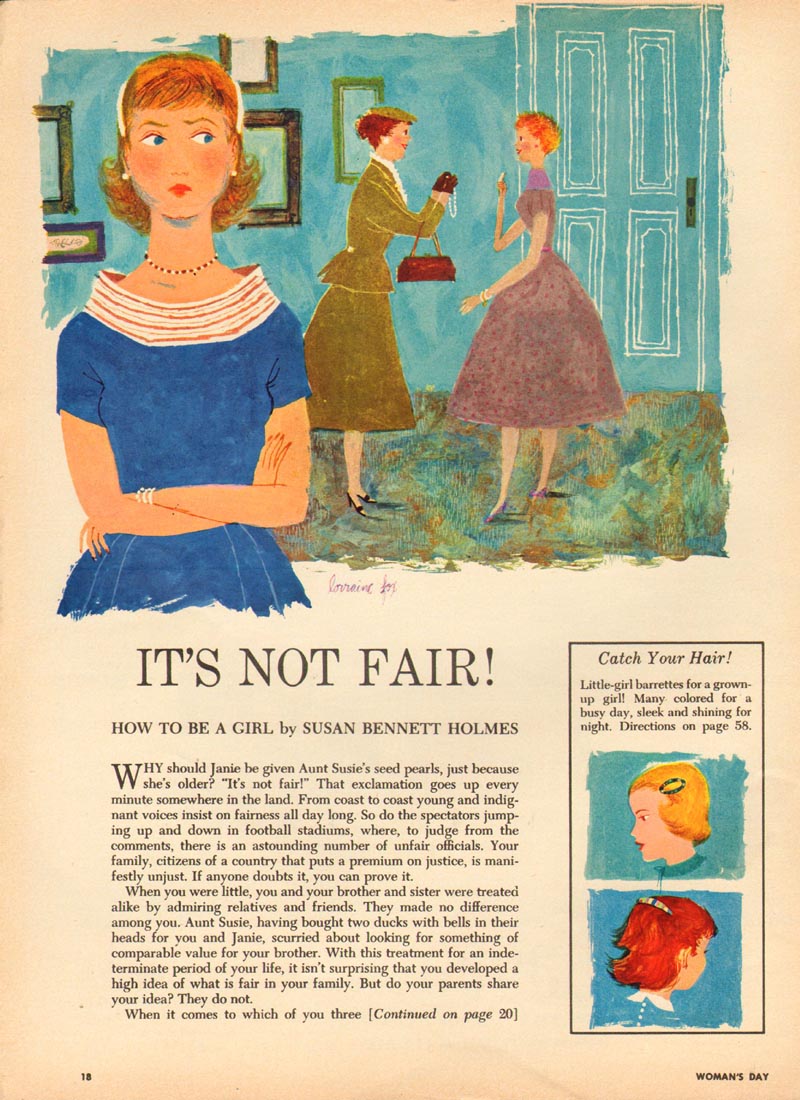
People would look at my work and say, "How cute," or "How feminine." I'd kind of smile and say, "Thank you."

That word "cute" got in my hair. I'd ask myself, "Why can't I be more of an artist?"
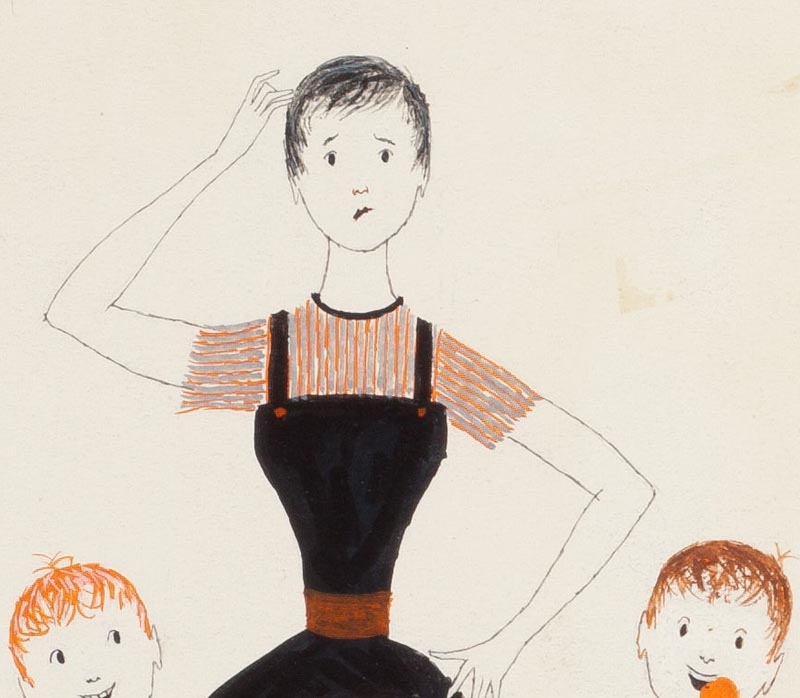
I was living with one and my husband was leading me (I didn't tell him this) in a new direction. He went with Cooper Studios when he got out of the service and I joined Cooper as a free-lancer. I was very influenced by the Cooper scene. I wanted to learn to draw better, for one thing. Finally we met a young painter, and he told us about his painting experience with Reuben Tam at the Brooklyn Museum Art School. A lot of guys at the studio, about 16 illustrators, started studying with Tam at night and so did I. It changed the thinking of all of us.
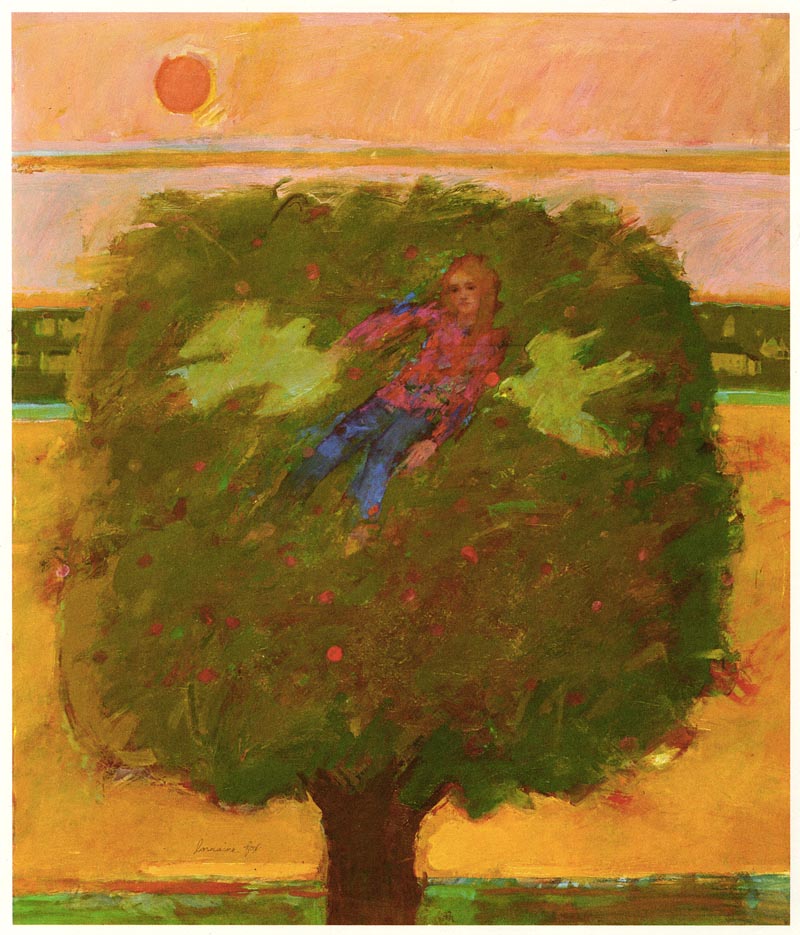
Later, I would run into people who would say, "I see you've been Tamified."
Famous Artists magazine: How did Tam change your thinking? What would you say was his biggest influence on you?
Lorraine Fox: He was only pointing out to us what painters have known for centuries. It was not a new thing. It was really an old story. It involves the search for self.

There really is no such thing as style, but there is a personal inner vision which is intrinsic to everyone. This is really what we admire in great artists. Knowing yourself will lead to originality, and this is extremely important to anyone's career. There is no need to copy another artist's technique when you can depend entirely and confidently on yourself.
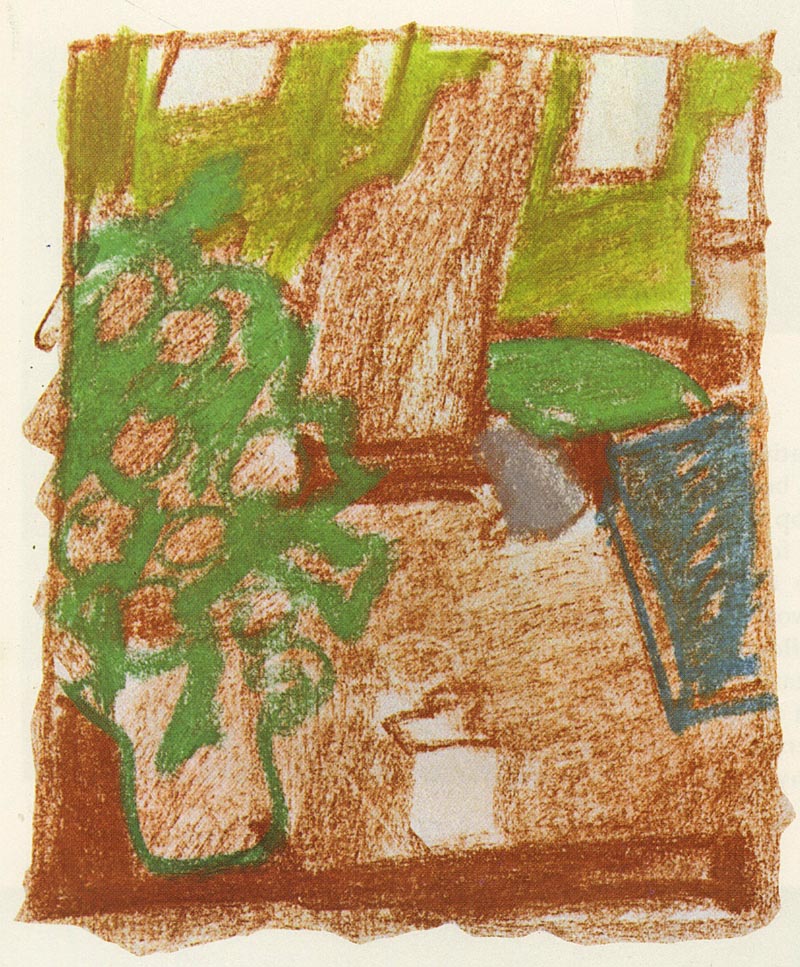
FA: How did Tam develop this confidence?
Fox: He would simply criticize what we did, not tell us what to do. Always in his criticism he would ask, "Why did you do it this way?" You would try to explain that so-and-so had influenced you and he would say, "It's not original."
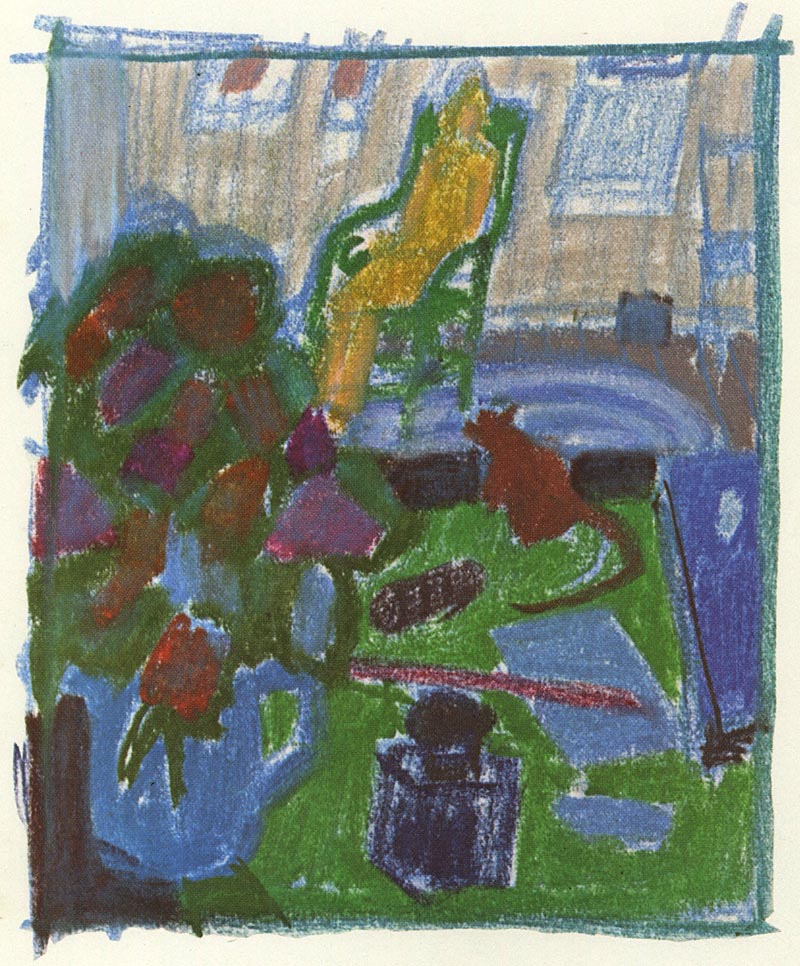
Finally you would try to sketch out a figure in a way that nobody had ever done and you would bring it in (it might not be very good) and he'd say, "This is original." Then you had to elaborate on the originality. It didn't have anything to do with being tight or loose. The emphasis was on originality. Like your fingerprints. Nobody can ever have the same set.
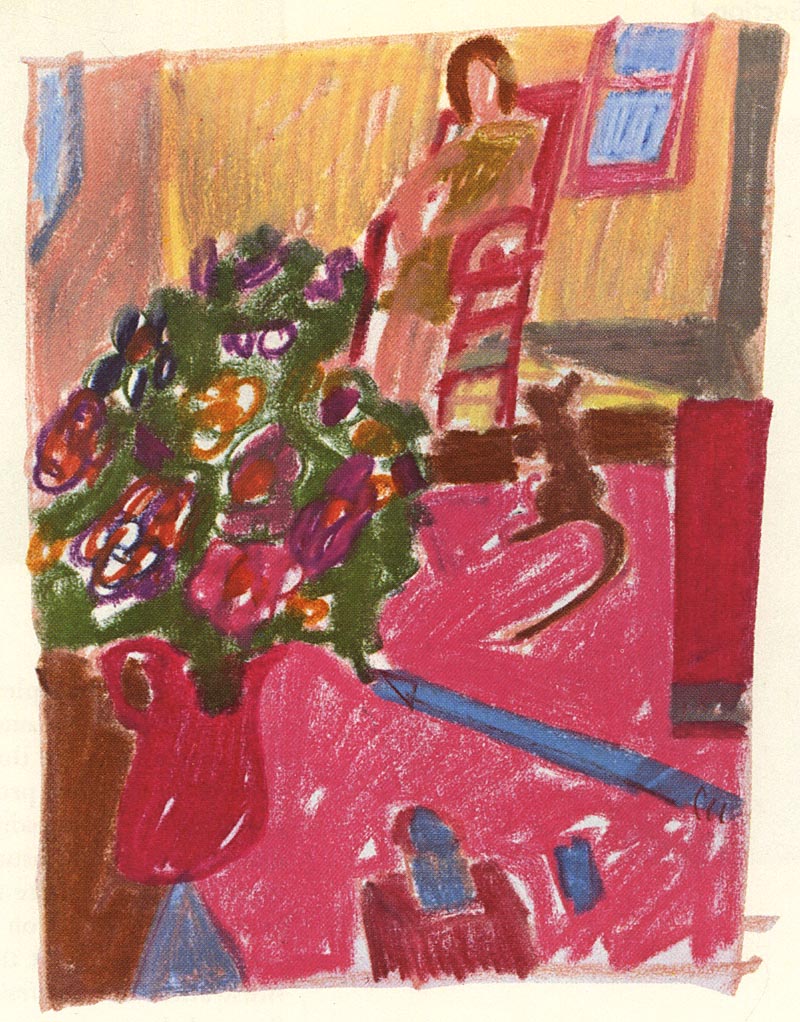
He never told us, "This is the way..." He knew, of course, that the search has to come from you, the way you live, dream, the way your senses respond to eating, sleeping, drinking, the movies, whatever is affecting you. Everybody has the potential for originality once they learn about themselves.

FA: What did you learn about yourself?
Fox; What I learned was that I had a tremendous drive. When I could do something about what was bothering me as an artist, I changed in many ways. I changed my reading habits, my way of seeing while travelling.
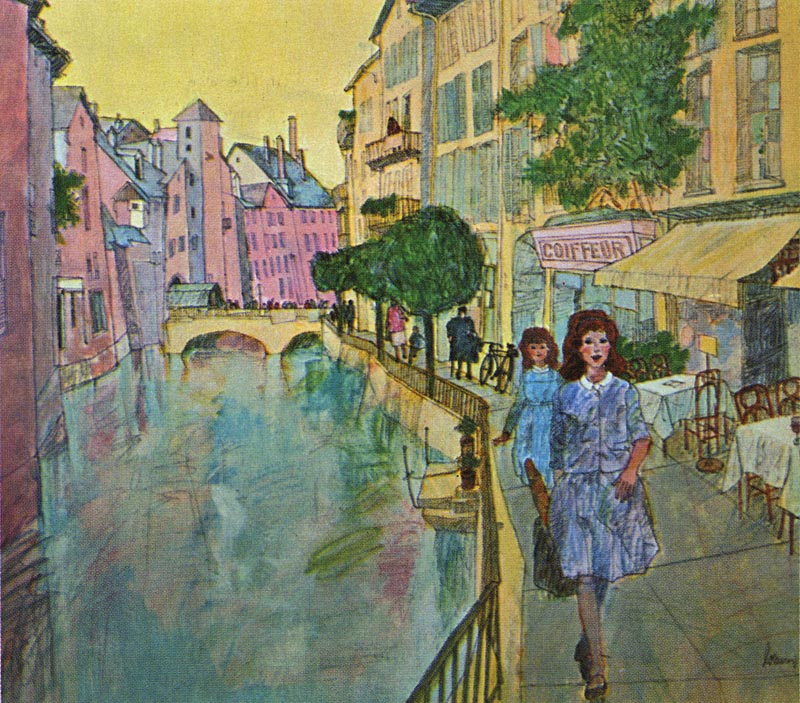
I began to carry a pad and pencil around and I would draw.
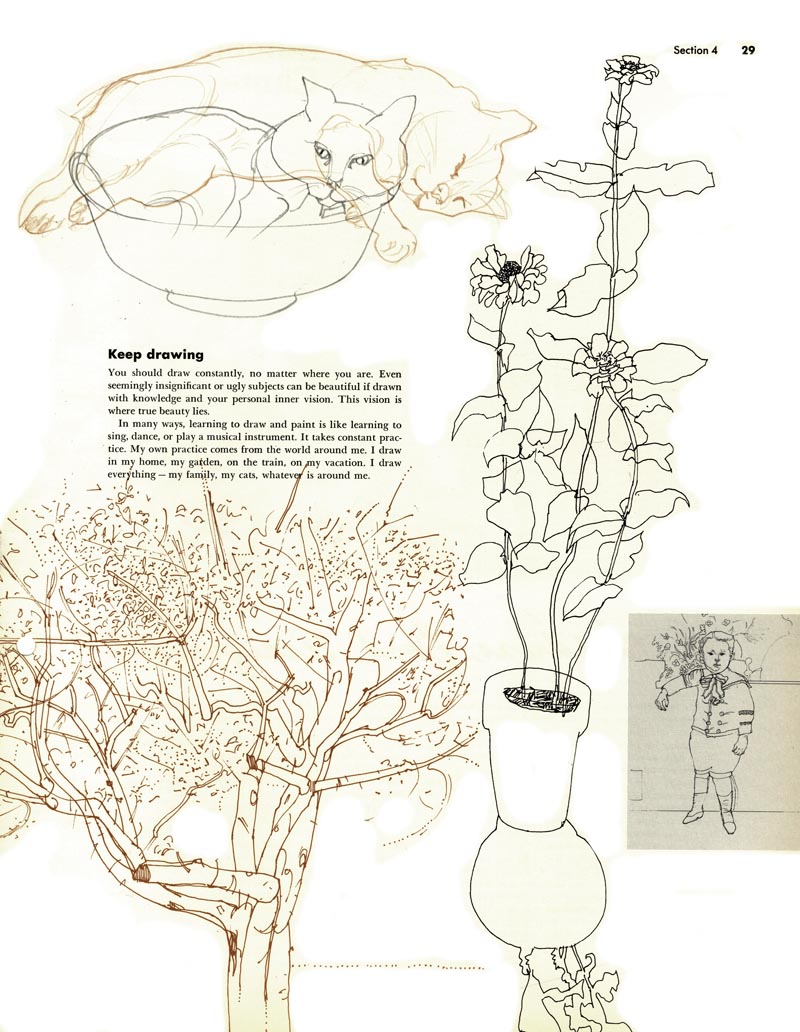
(Now I draw everything, in my home, my garden, on the train. I use my family, my cats, as subjects, whatever is around at the moment.)
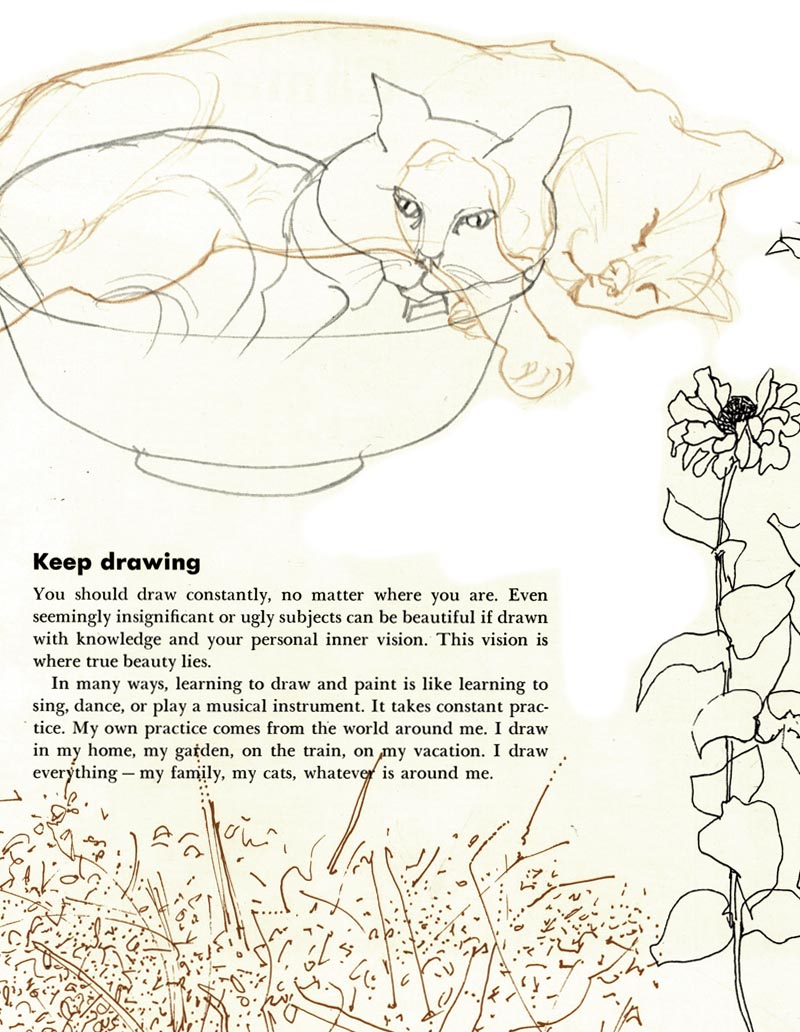
I clipped pictures from magazines. I went to galleries and museums. That's what painting classes did, they made me able to understand what men like Vermeer were striving for. And the Renaissance painters. Giotto. I love Giotto's work. I like contemporary art, too.

About ten or fifteen years ago the abstract expressionists formed The Club - de Kooning, Gorky, Matta, Pollock and others. A friend of ours took us to The Club and we sat in on meetings and listened to the way these men thought. This is what good art is all about, and what good commercial art is all about.
FA: What personal qualities do you think contribute to success in art?
Fox: It's a combination of this capability for self-search and drive and talent. I don't necessarily put talent first. If you are very honest with yourself you can see where your talent lies. Going to galleries and museums will help; so will going to underground movies and whatever else is happening related to art. You begin to place yourself and you see where you fit in.

Lots of people don't want to face this. They don't want to have to admit, "I'm not this big a deal," or "I have a hell of a lot to learn." But for an artist this is a serious search.

If you take it that seriously you will begin to find out all of these things. If you have what I'm talking about, you can be one of the busiest artists around. As you strengthen yourself your work will become more confident. If you have confidence you can achieve a top level of quality.
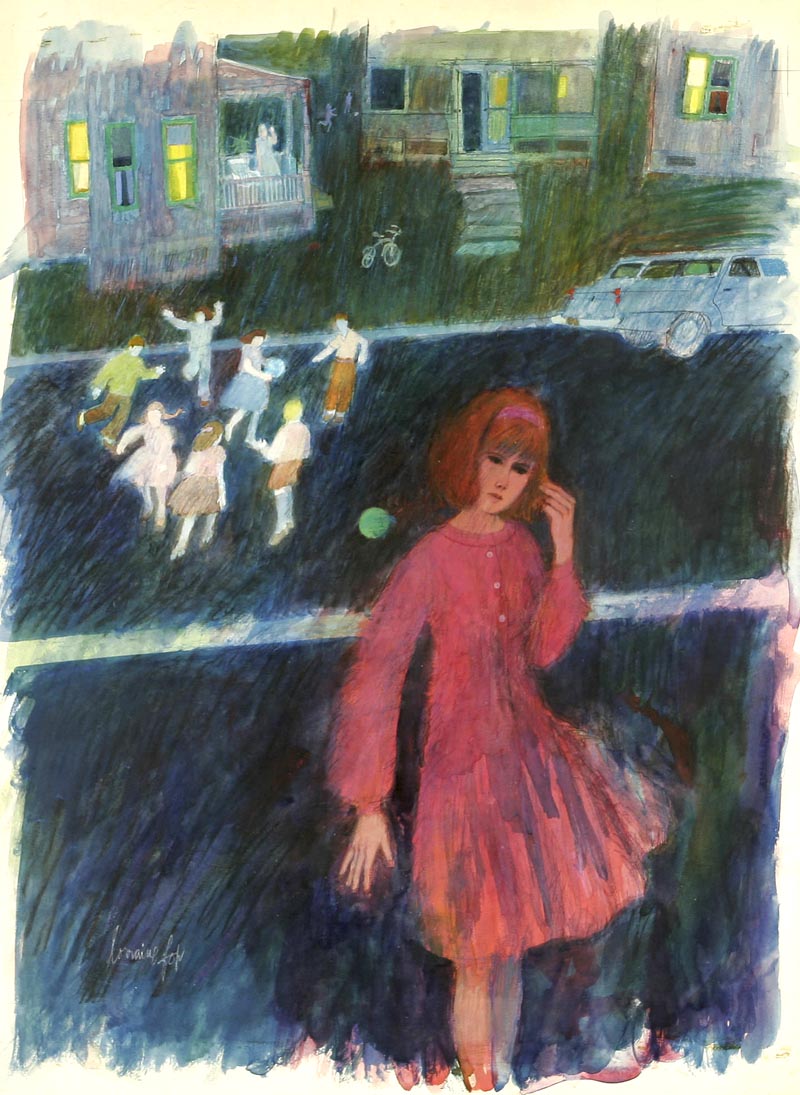
FA: Did your approach to commercial art change radically while you were immersed in painting classes?
Fox: It changed. I began turning down stuff. When somebody wanted me to paint food or do "some of those funny little figures," I would say, "I'm not doing that kind of thing any more."
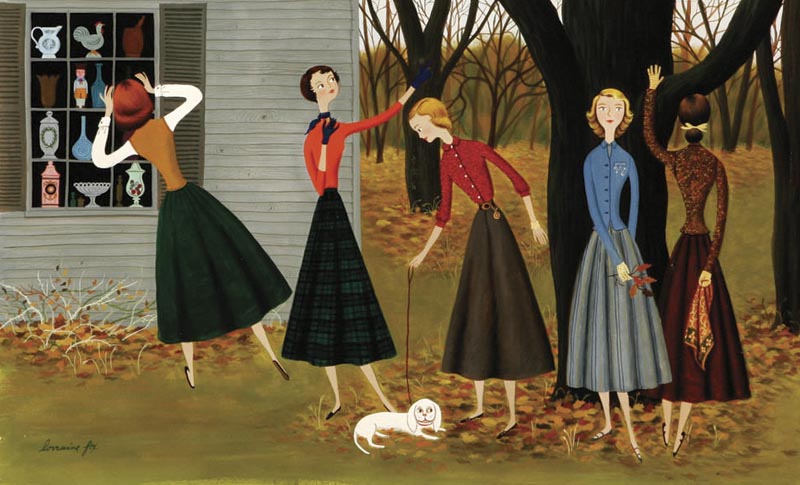
I began cutting off some of my business. But my illustration was getting better and I began getting double spreads in the magazines.
It was never quite right - quite where it should have been. I wasn't really ready. But people could see that something was happening to me. The art scene was changing, too. Art directors were looking for new things. The amount of avant-garde illustration went way up. I realized that the painting and the commercial art had to come together.
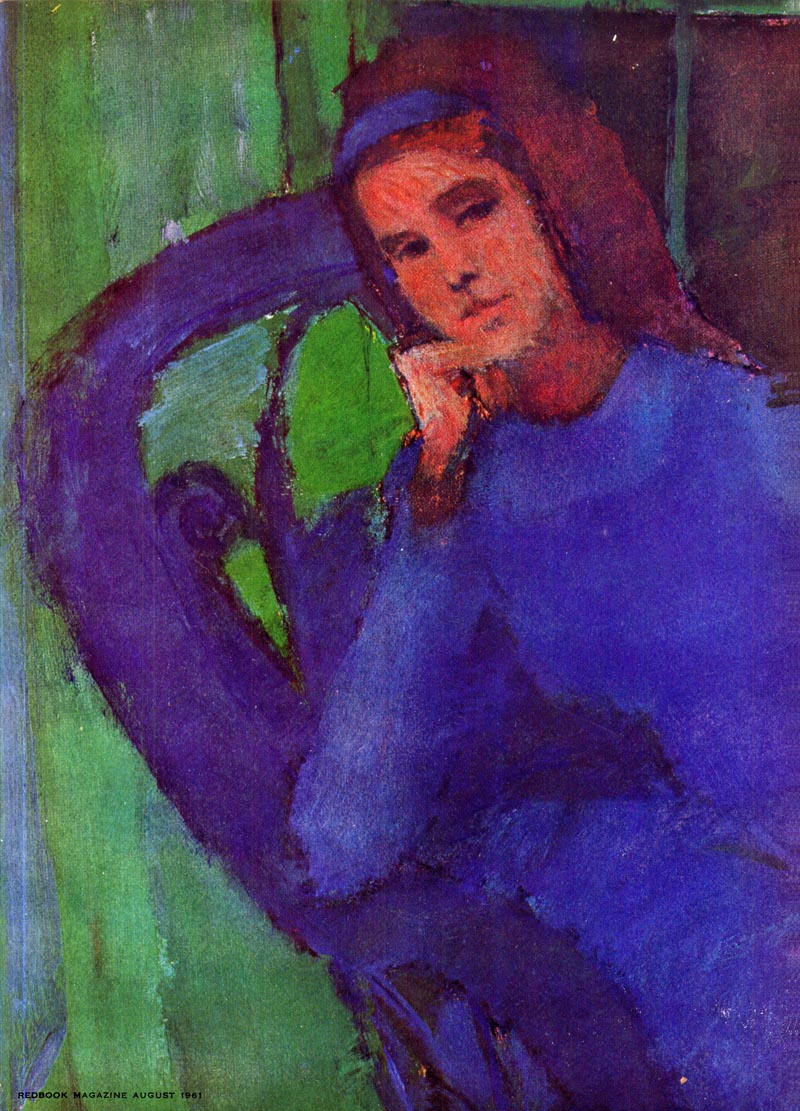
I studied with Tam for five years and finally it did come together.
Famous Artists magazine: You have been working on this synthesis [painting and commercial art] for a number of years. Is it a success?
(Below, an example of Lorraine Fox's style at the time of the 1967 interview)

Lorraine Fox: The adjustment has been tremendous. I don't know about success yet. A lot of people look at my work and say, "I can see it's your work." Then someone else will say, "Gee, it's beautiful, but it doesn't look like a Lorraine Fox!" I don't know how he means that but it makes me very happy.
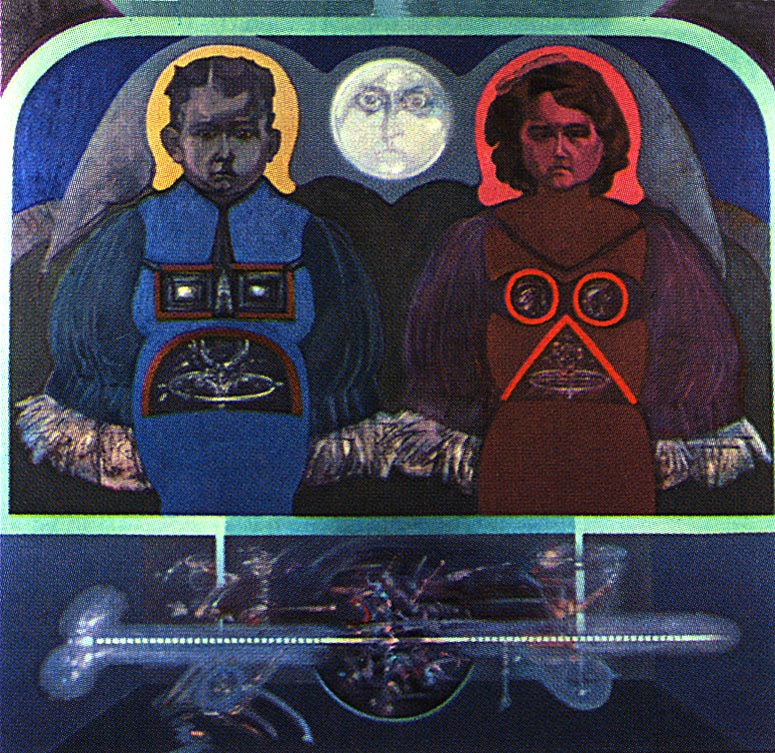
Now I'm painting on my own - landscape painting, figurative painting. I'm getting a direction. People think an artist can sit down and do anything. I can't. I wish I had the ability to cope with three or four things at once but I have to finish one thing before I can start on something else.
(Below, Lorraine Fox children's book illustration from 1966)
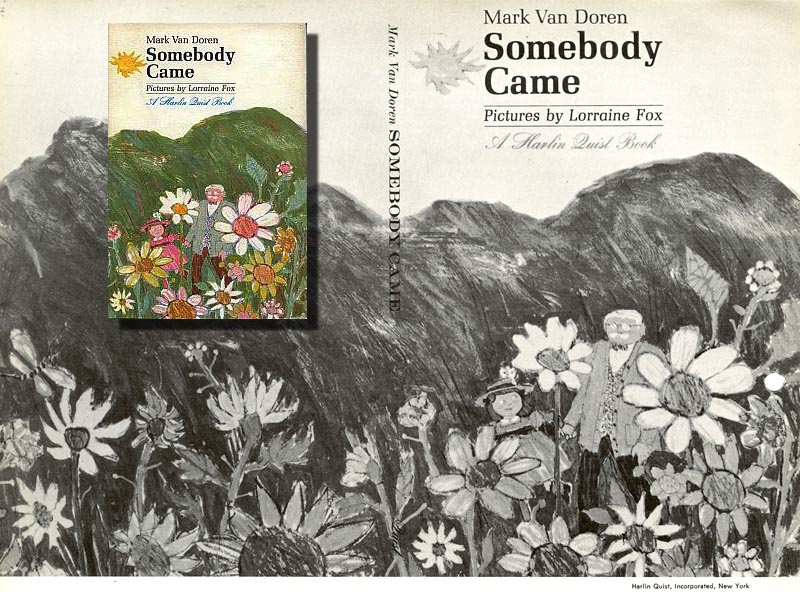
FA: That must make it difficult to free-lance because you are necessarily starting one thing and finishing another as well as lining up work. How long does it take you to do a major illustration?
Fox: Well, the Ladies Home Journal just gave me a month to do a Christmas story illustration.
(Below, a Lorraine Fox Christmas illustration for McCall's from 3 years before this 1967 interview)
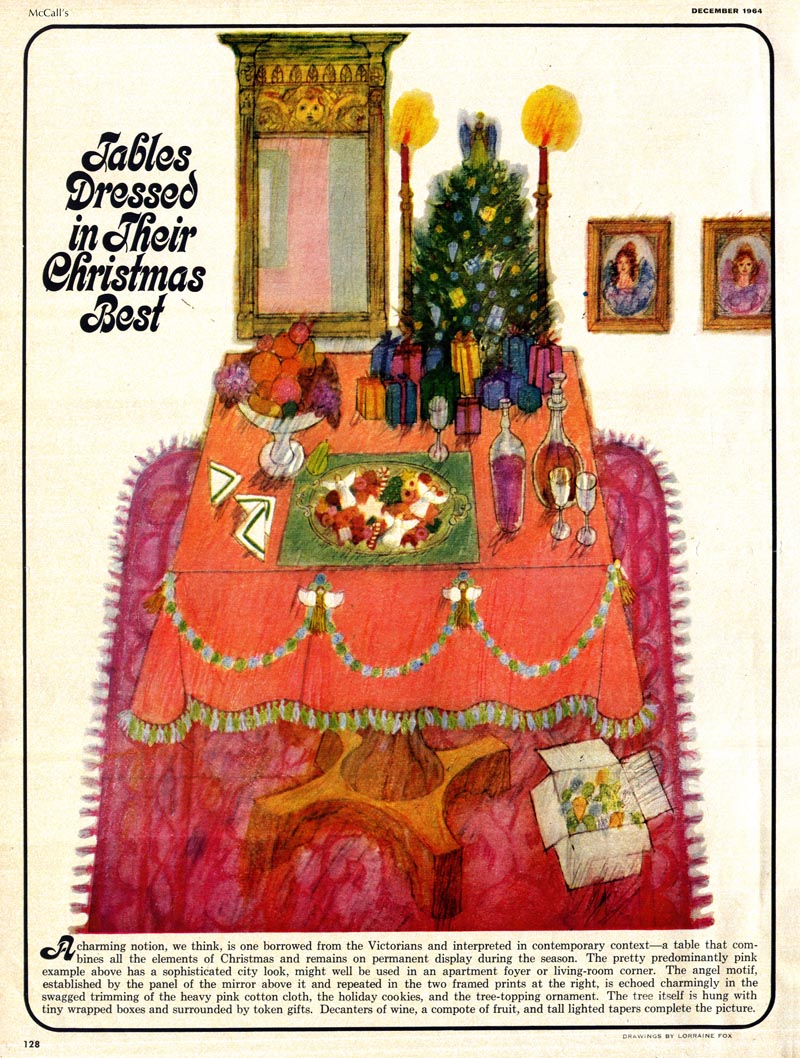
Actually, they ended up by giving me less than a month. it took me a week to do the sketch which showed my concept of the illustration. This involved getting the idea, getting the model. I could have done the finish in a week but it took longer. The concept is right up to today's kind of thinking. The design and technique come out of my paintings.
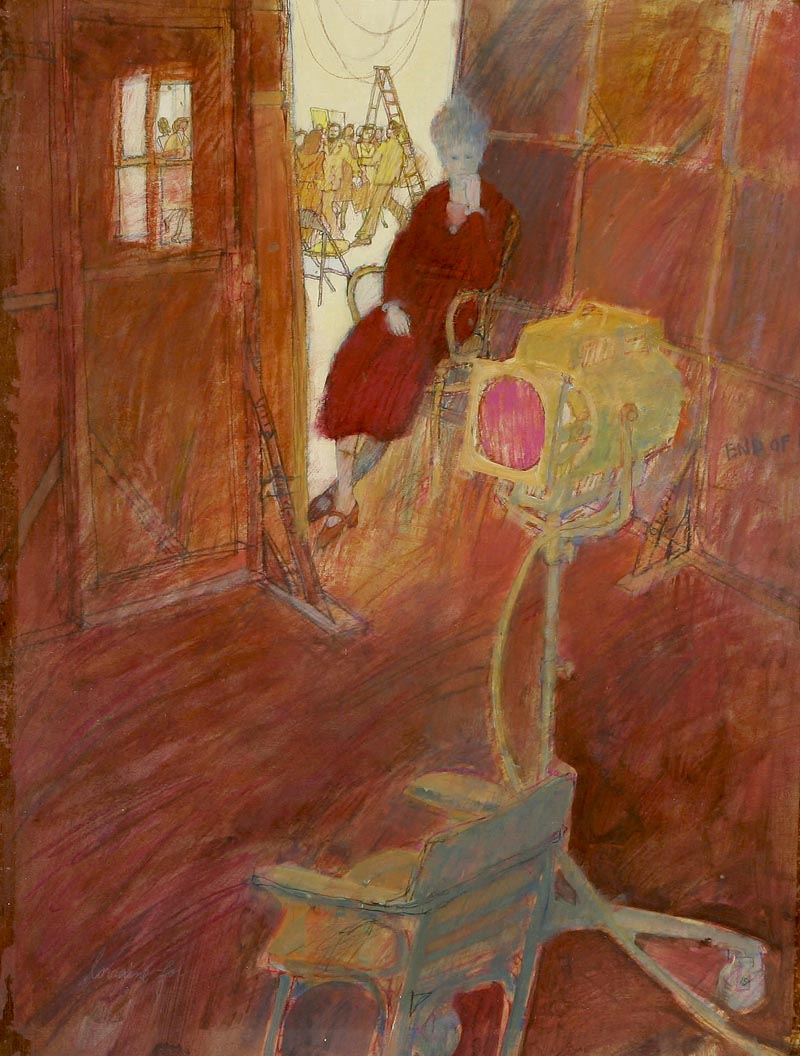
The difference between painting and illustration is this: An illustration must be specifically related to the story - you have to make the boy, the dog, the Santa Claus and the angel in the copy.
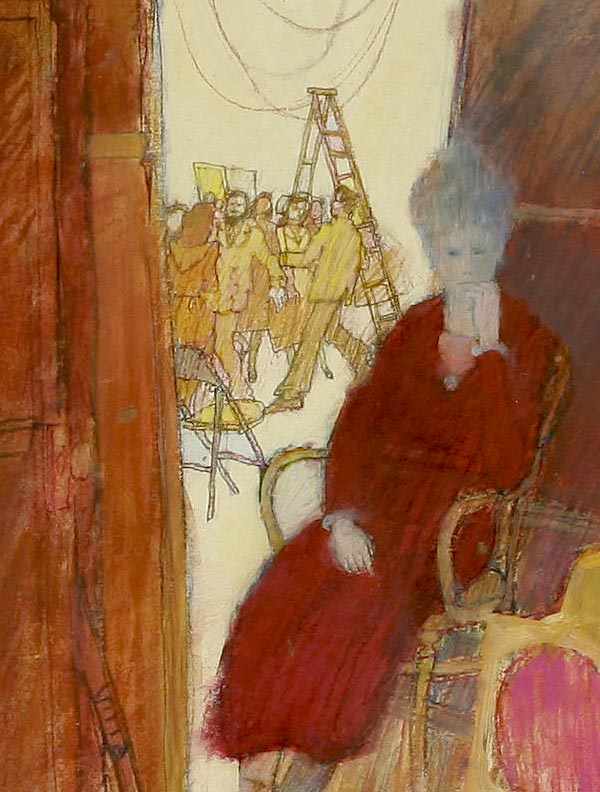
In painting, the ideas are related to your personal imagination. The ideal thing would be to have them use my paintings as illustrations.
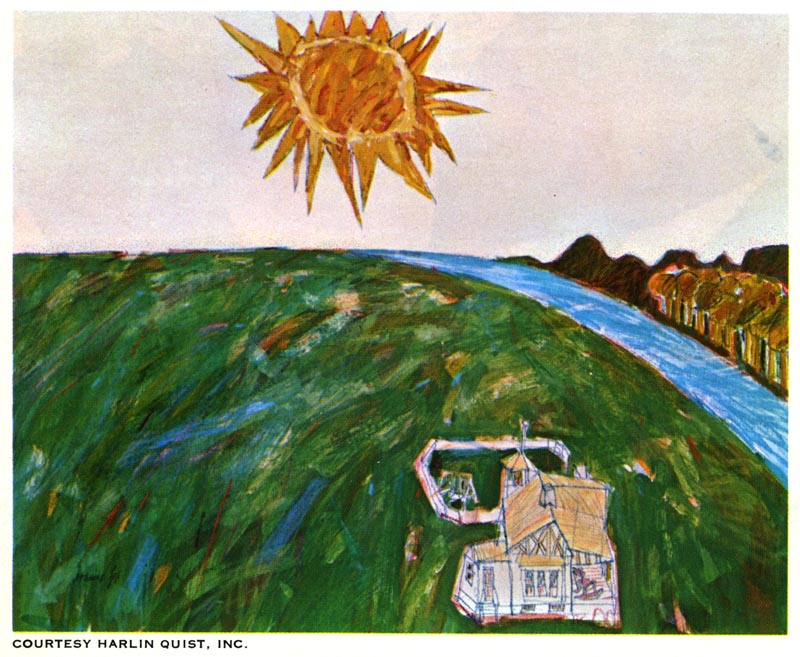
FA: The need to stay contemporary, "with it," is so important for the artist who wants to reflect his time. Do you find that teaching helps you keep in touch with what's happening? Do you get something from your young students?

Fox: Once you begin to find out what you are all about, the young don't influence you that much.
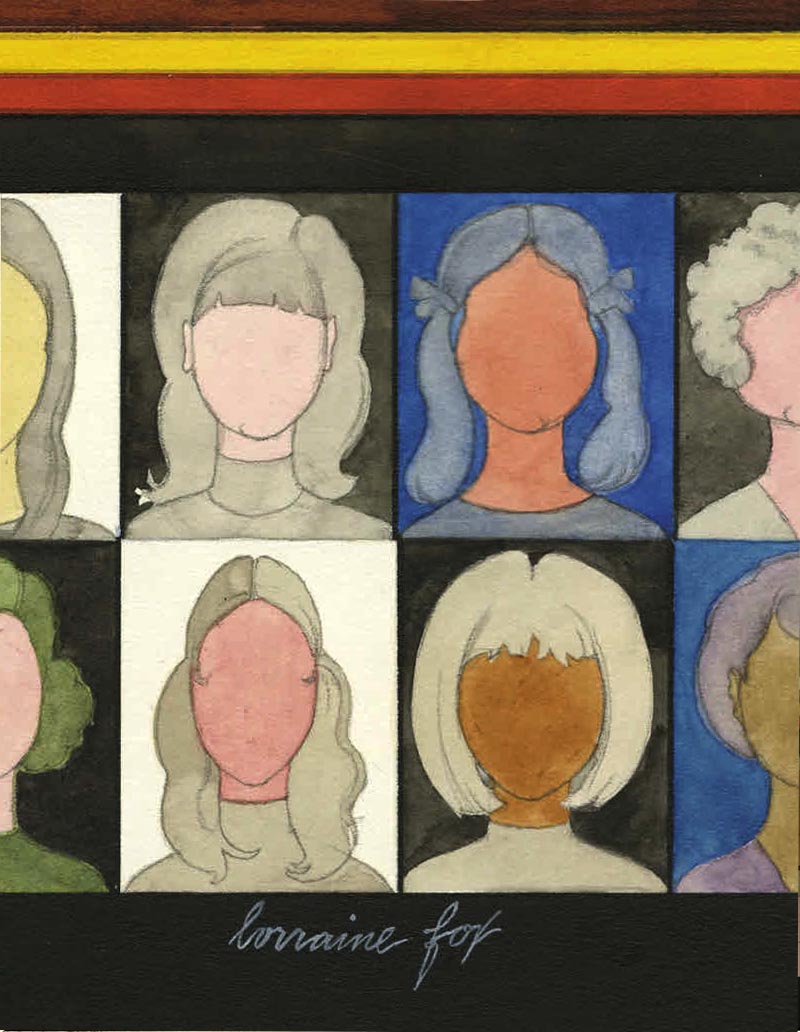
If you're in touch, if you are curious and inquisitive, you're bound to be in tune. I happen to have that kind of instinct and so does my husband.
FA: You have advised students to understand their own character. For example, you ask them, "Are you fastidious or sloppy? Do you have a tendency to line things up neatly or let them fall to chaos around you?" What about your character? Do you like to line things up?
Fox: I think I do but I'm kind of sloppy, which I like. After the painting classes I decided that I just couldn't cope with the neatness. I guess I'm still neat, though, maybe semi-neat. I think there is a basic rigidity in me and it does come out. The reason I'm able to say this is that my husband is not. I'm able to get a clearer picture of me looking at him.
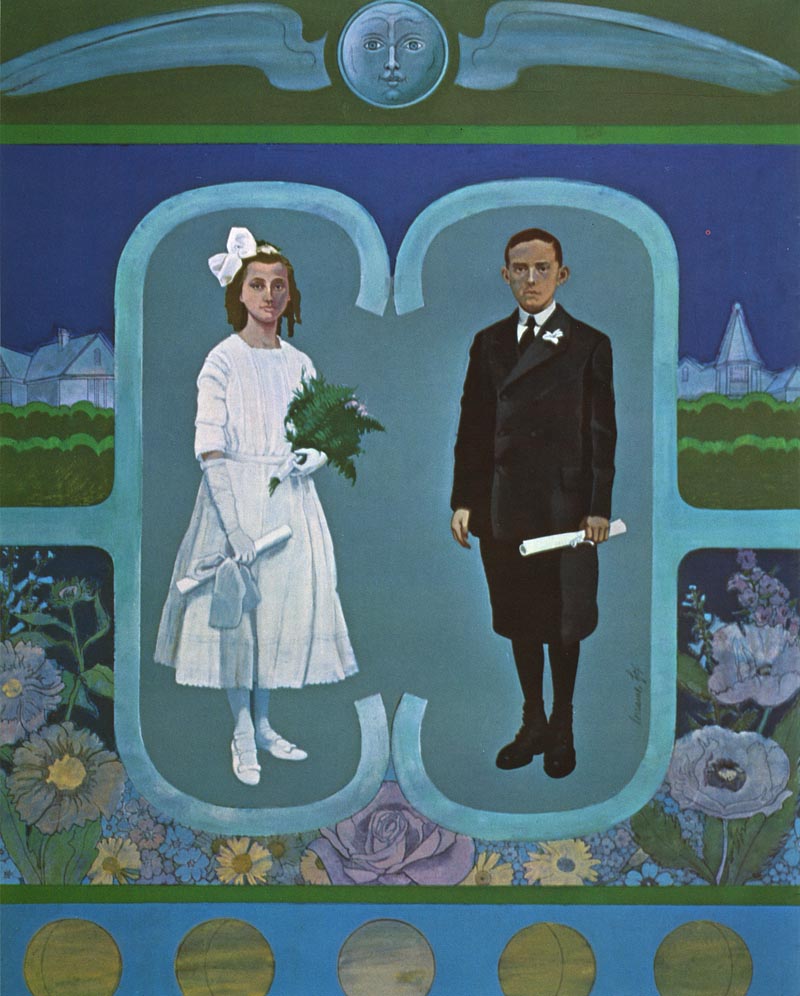
Everything is relative.
Famous Artists magazine: How do you cope with housekeeping and, at the same time, work so hard at painting and commercial illustration and teach as well?
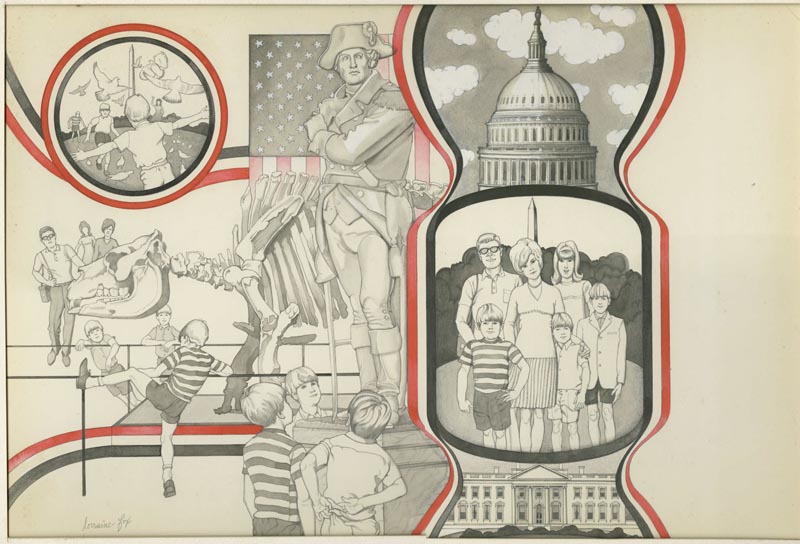
Lorraine Fox: The work interferes a great deal with my home life and my social life. I haven't had a vacation in two years. I work all the time, even weekends.
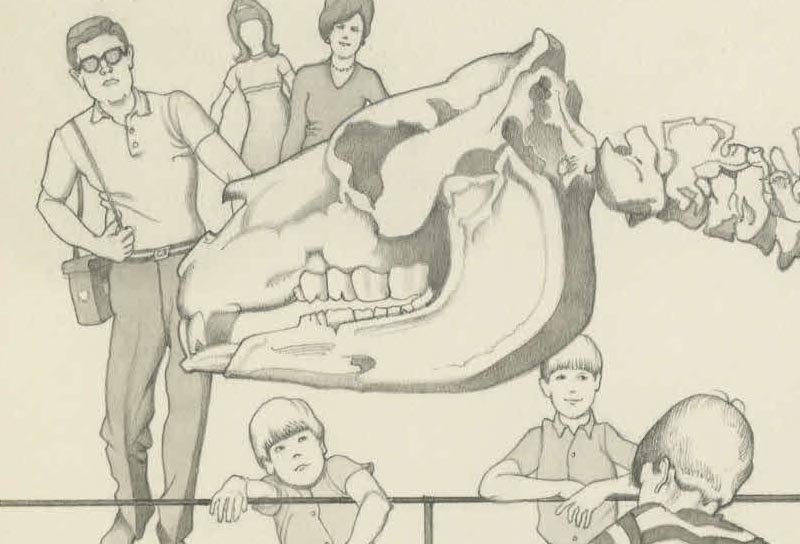
I have very little time for closet cleaning. Gracie Allen once said that after she retired she would finally straighten her drawers and clean the closets. I feel that way. I have a cleaning woman once a week but the rest we do ourselves. I happen to have a unique husband. He helps a great deal. He's willing to to do more but I don't want him to do things like the dishes. He's a magnificent cook because he comes from Italian background. His father cooked and he learned how and he's very good.
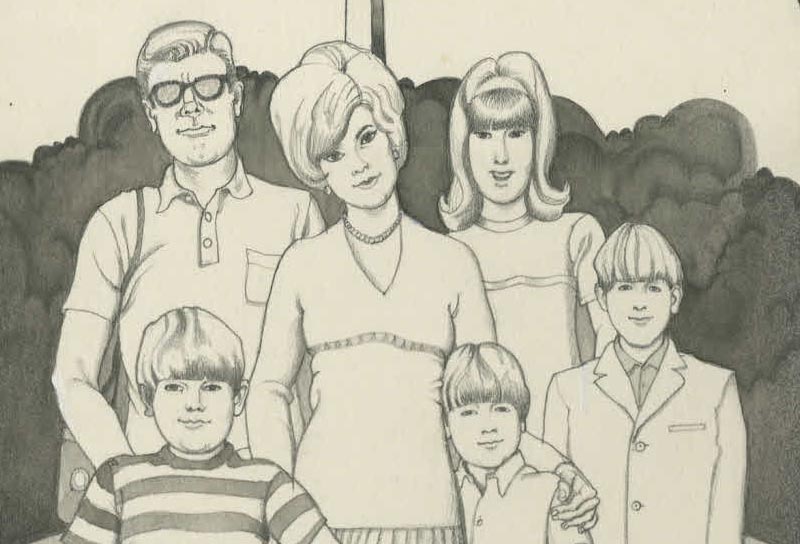
But that bothers me. It takes too much of his time. When we both have deadlines and he's pressed and I'm pressed, we sometimes don't eat until eleven at night.

FA: Does it help, living with another artist? Do you feel freer, more productive?
Fox: At this point in my life I couldn't live with anybody except an artist or someone like my husband. I don't think anybody except another artist would tolerate me.

You get older and you decide, "My God, the time is closing in and if I'm ever going to do anything I'd better start. The small scratch I make is so meaningless, at least I can try to do more."
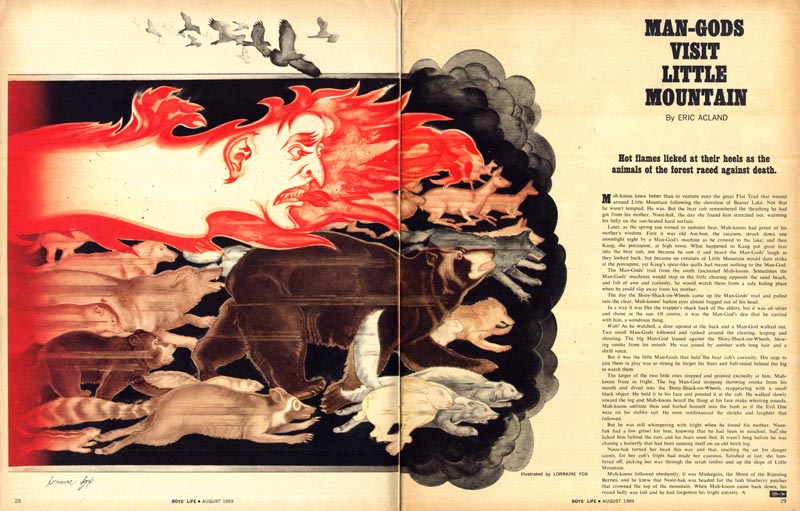
It gives me a reason for being an artist. It is a never-ending search.
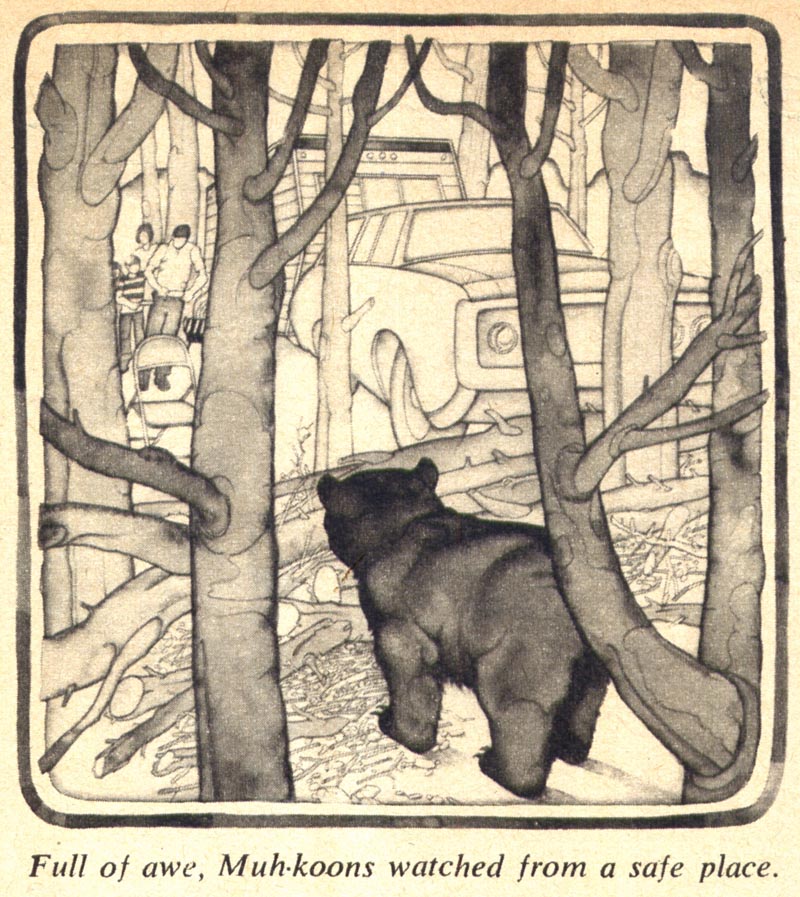
I am far from being the kind of draftsman I would like to be. The struggle is what keeps you alive - the struggle is important, not the end result. The end result becomes meaningless.
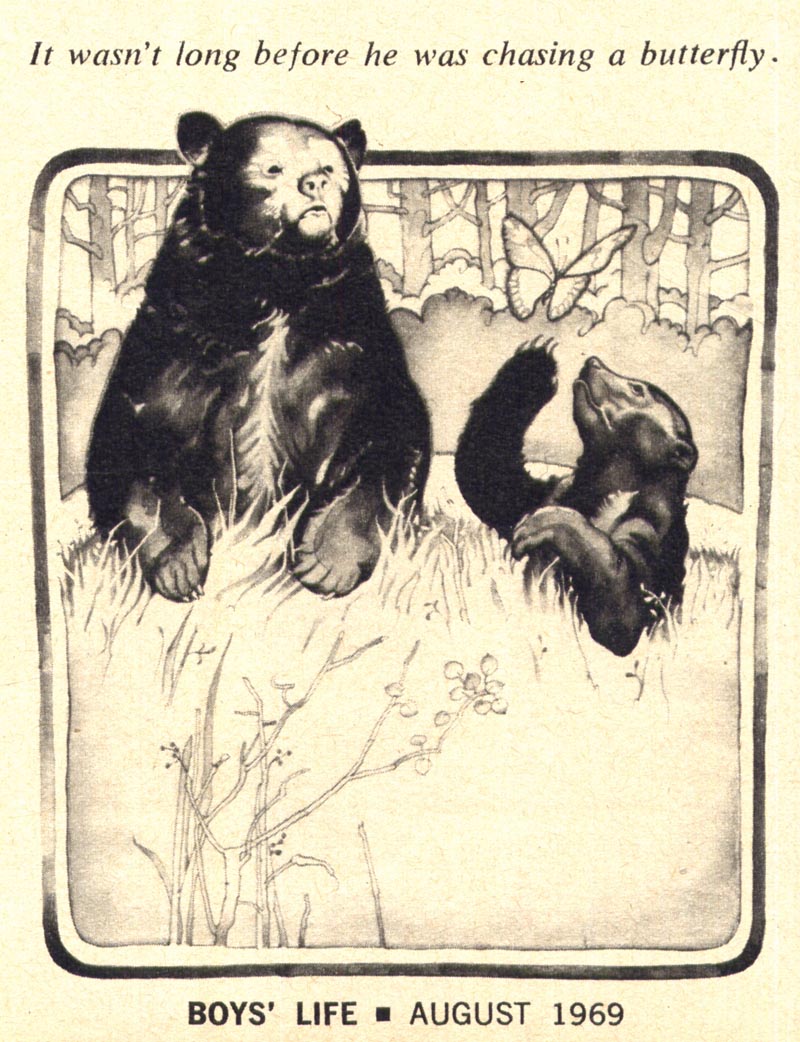
The attempt is what it's all about. The hope that maybe it can become better.
* Many thanks to Matt Dicke for providing the scans of the Lorraine Fox interview pages from the Winter 1967 issue of Famous Artists magazine being presented this week. Thanks to Heritage Auctions for allowing me to use scans from their archives.

What an amazing blog, pleased to have found you!
ReplyDeleteSarah
I love her work! I wish I could see more of the breath of the body of her work that she beautifully illustrated.
ReplyDeleteVery cool, Leif! I know I just posted on TI, but I'll post the links here as well. More Lorraine Fox in my Flickr:
ReplyDeleteHousehold Magazine cover for Nov. 1952
Yes! It was Lorraine who did the fantastic two-color illustrations in the Better Homes & Garden Decorating Book from 1956.
Incredible artist. A great inspiration!
Thank you for posting about her illustrations in the Better Homes & Garden Decorating Book from 1956. I like her style. Some of the captions nowadays are funny, such as for chapter 6, "Glamorize your floors." Do you know whether she had any role writing captions for that book or other commercial art?
DeleteGreat blog!
ReplyDeleteAnd great post!
Back in the late 1960's in New York City, when I was struggling to make a name for myself in illustration, Lorraine kindly gave me interst and advice. She was kind and considerate as she looked over my work, and commented in part, that my work looked like the art of several people, and that was not going to make it any easier to sell... she also said, in passing, that it seemed (in the time of Pushpin Studios dominance in the illustration/graphic design field, and the hippies attempts to change or psychedelicise the current looks, that "it seems that every 10-20 years, you've got to come up with a new look." She said this with the wisdom that her own style (IMHO) her own style was very sweet and feminine, and in the late '60's it was getting to be "out of date..."
ReplyDeleteI was too young and callow to fully appreciate how her comments to me were, in their way, so sincere and true to not only me, in what I was trying to do in New York, but to her, as a truly major, accomplished artist who was seeing that times and styles change, and even the greats have to face the future with an understanding of commercial success vs. personal excellence.